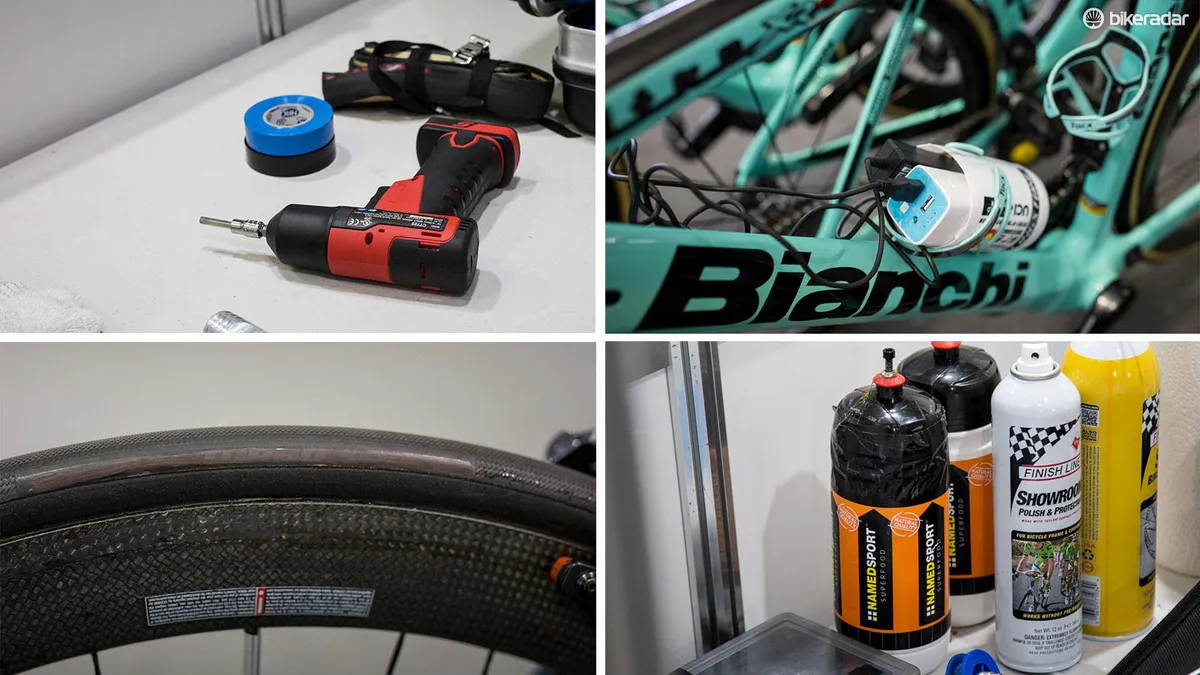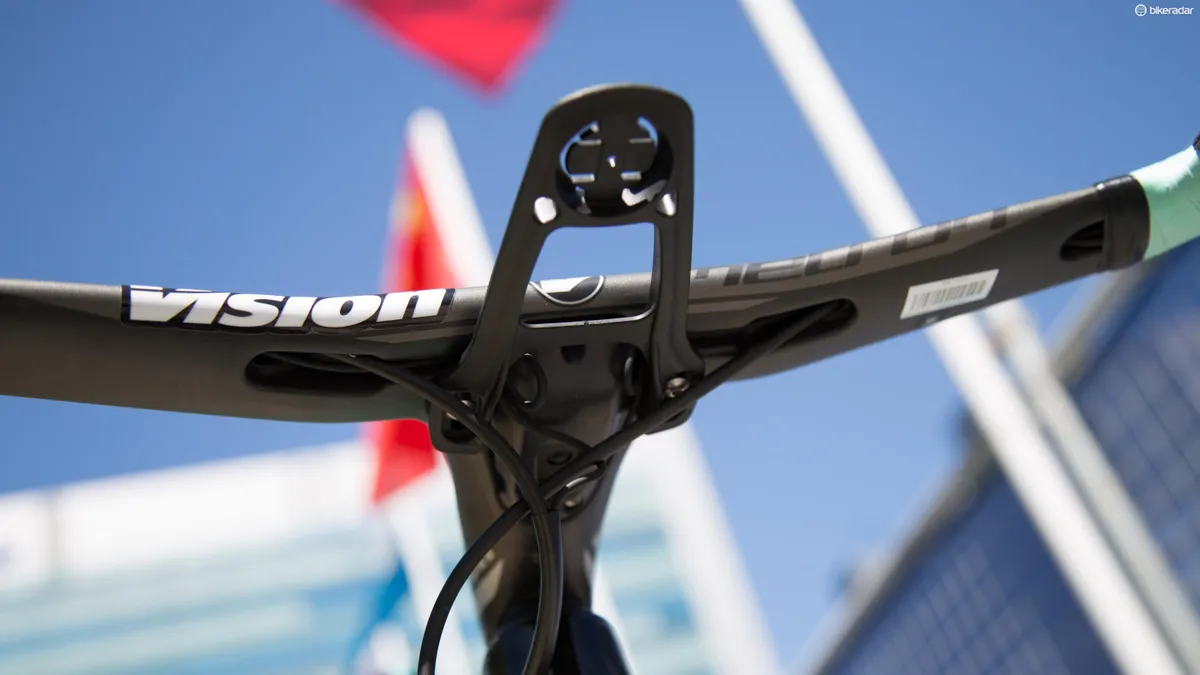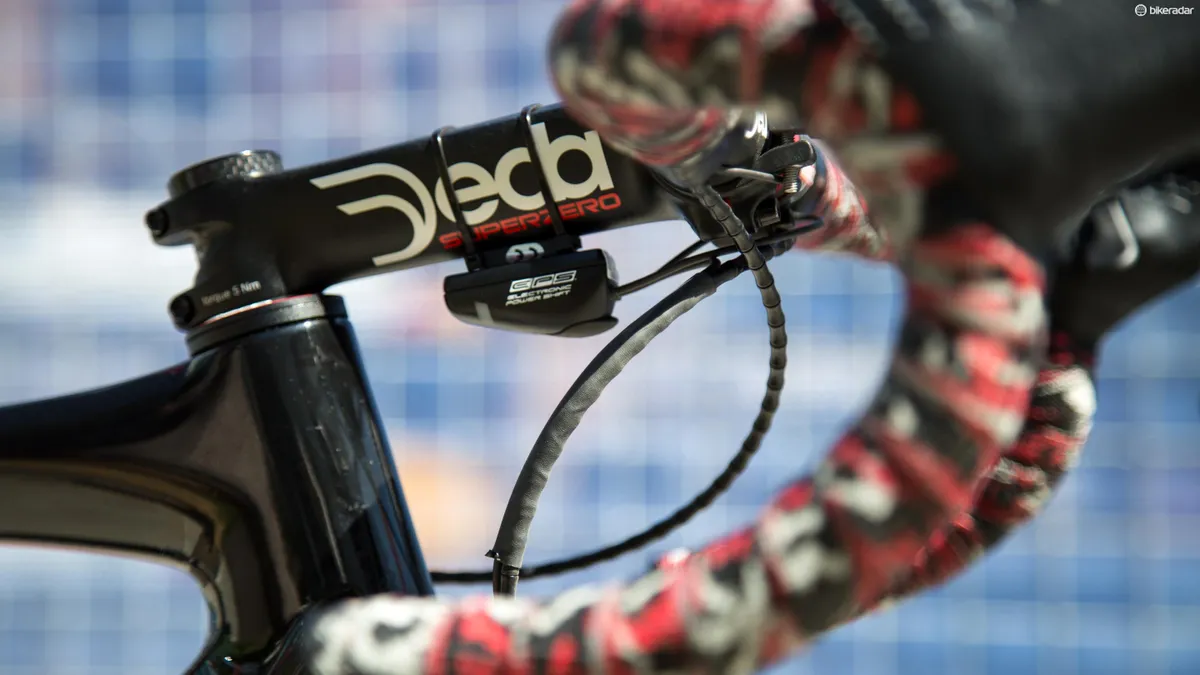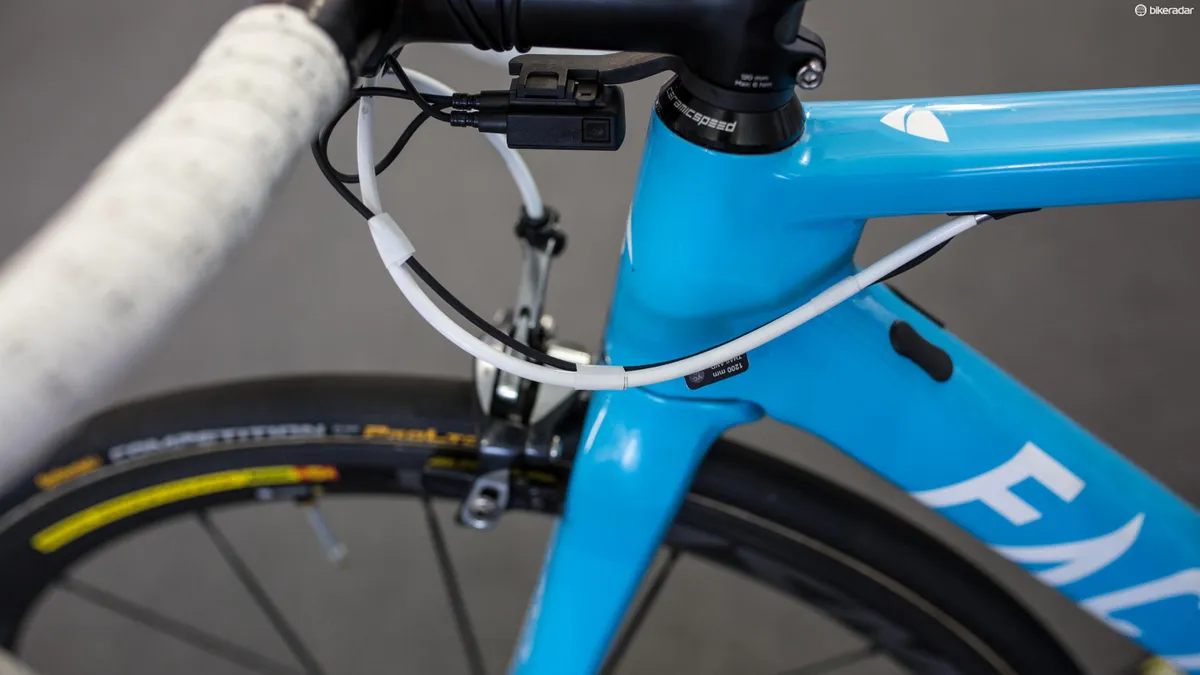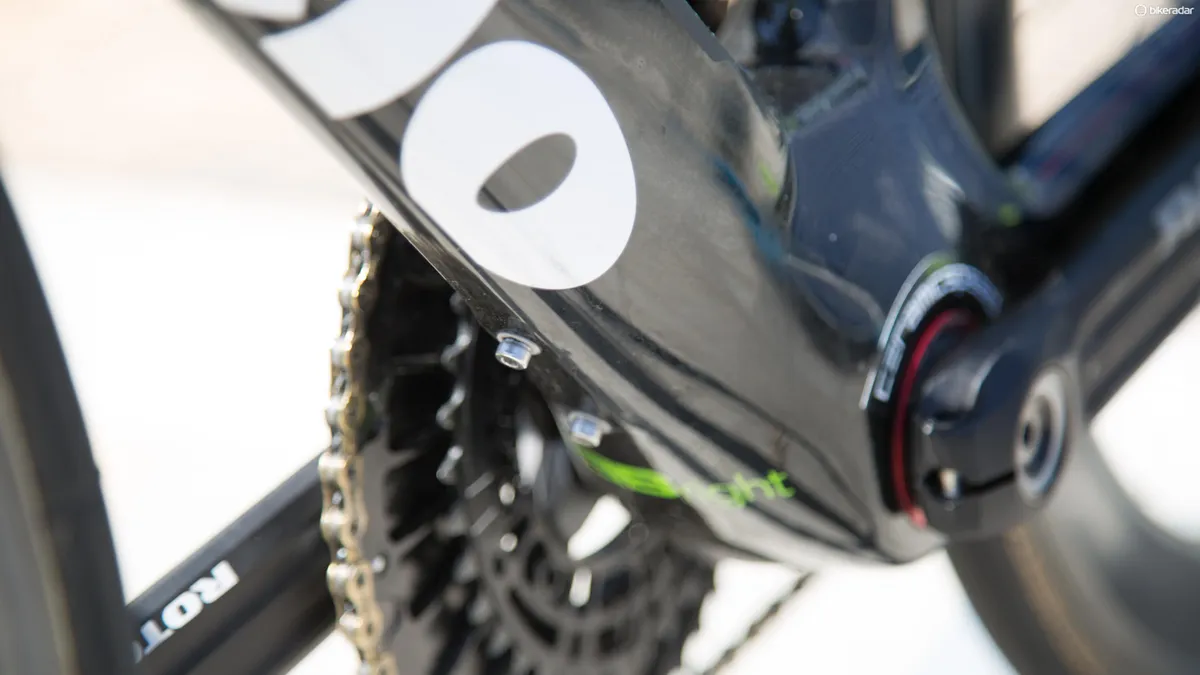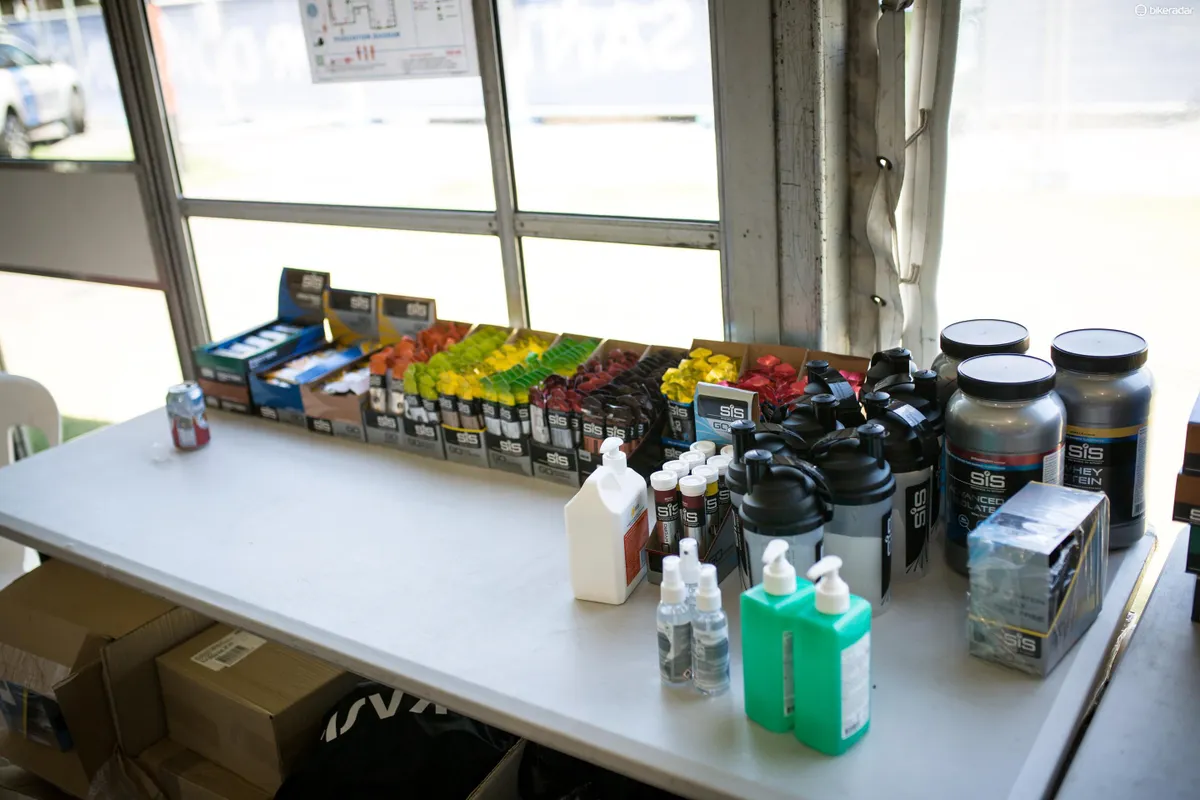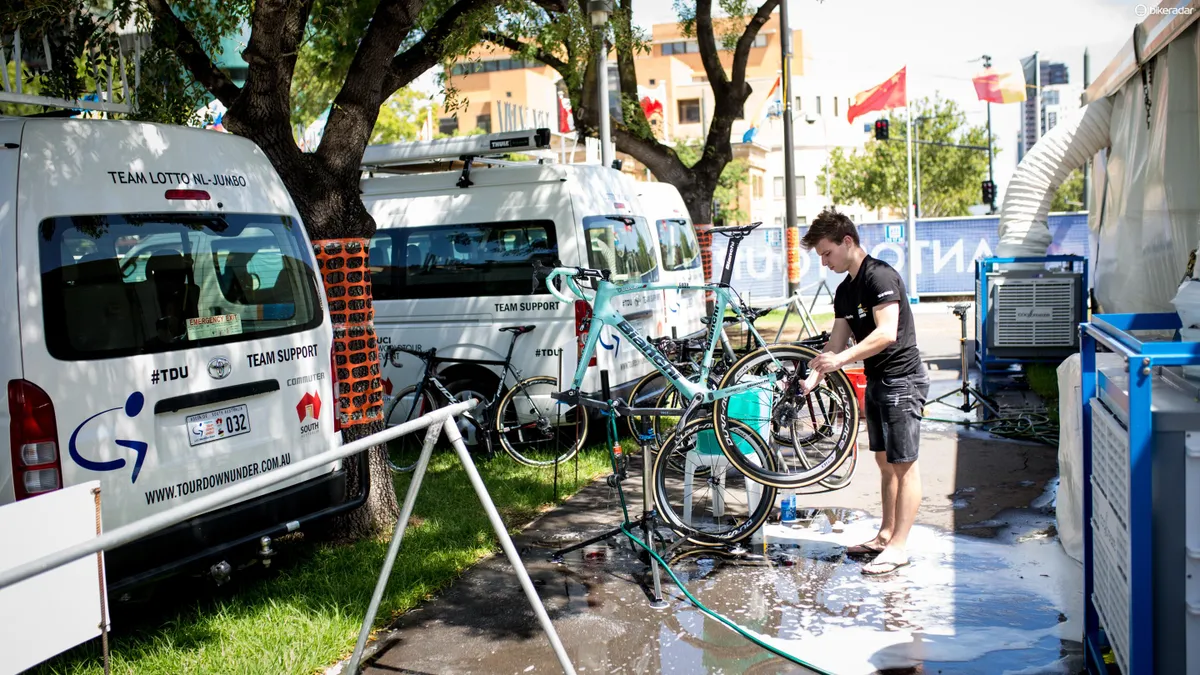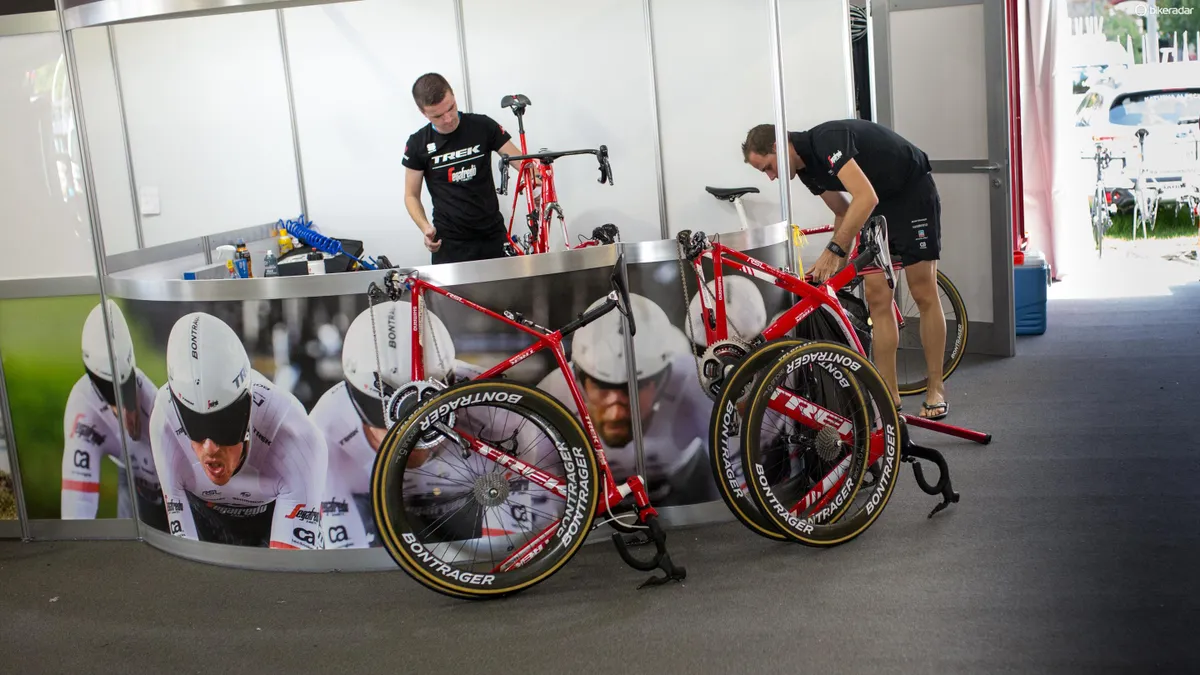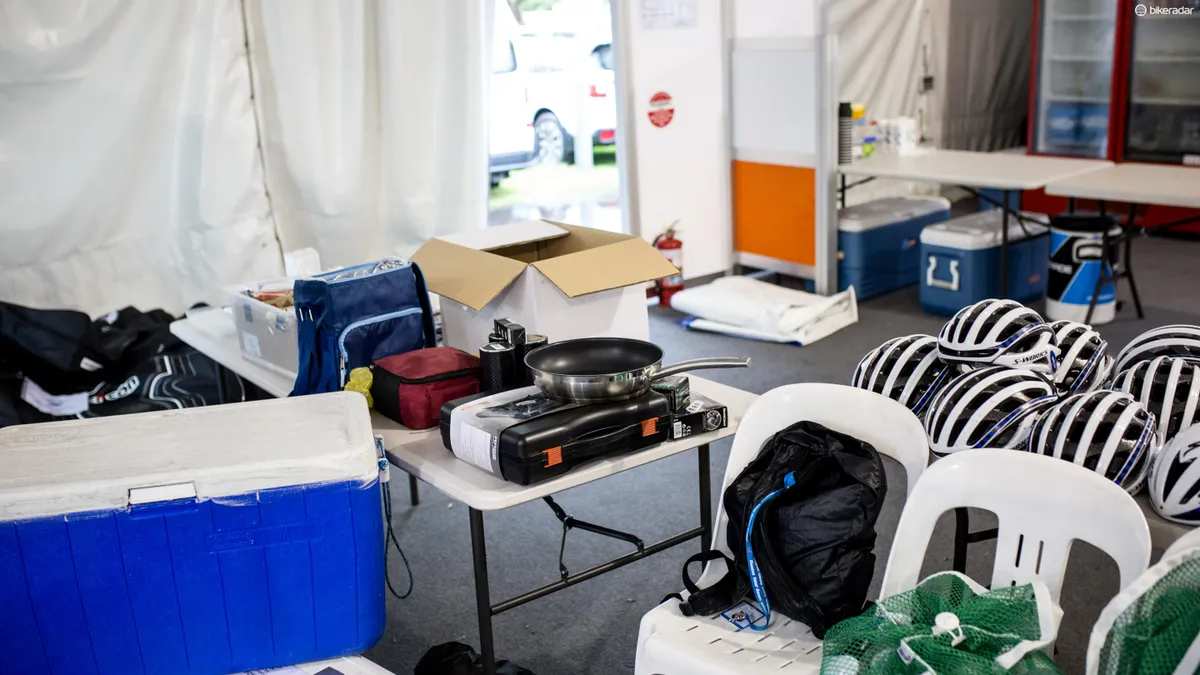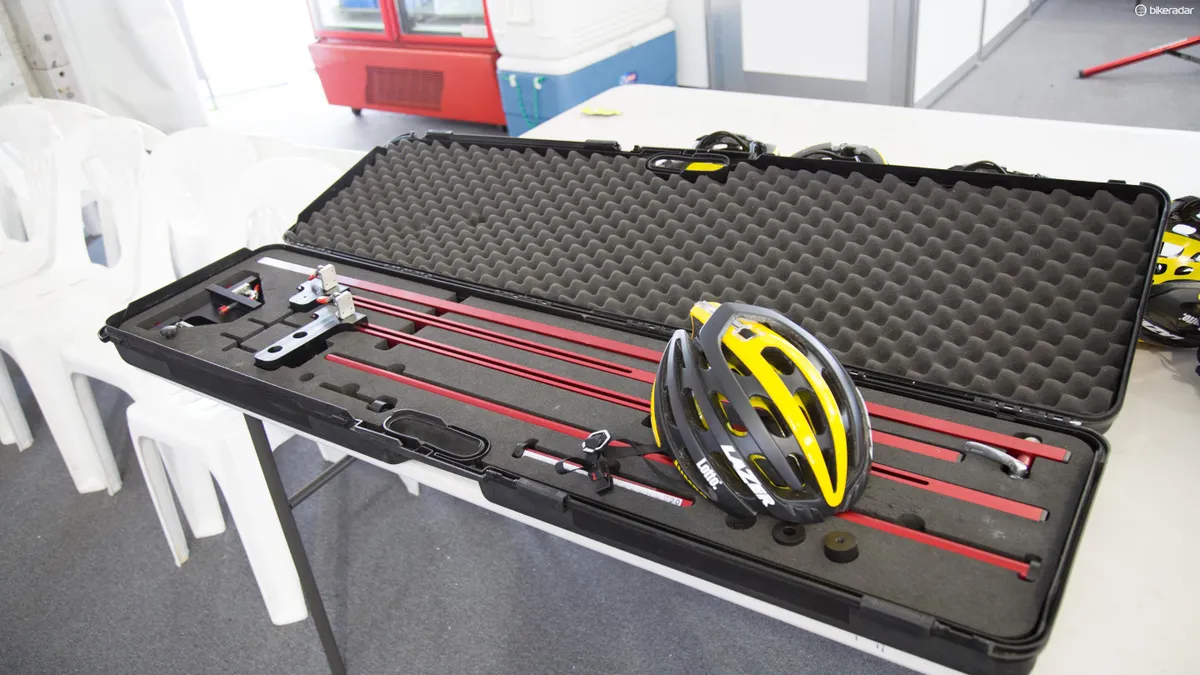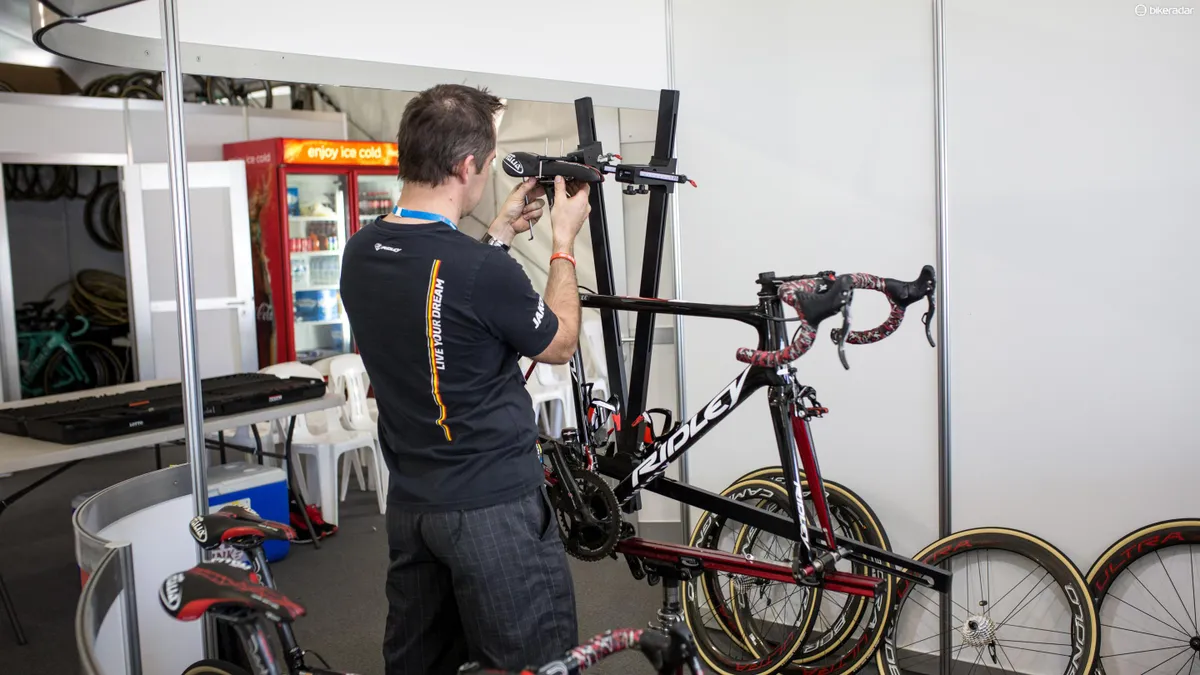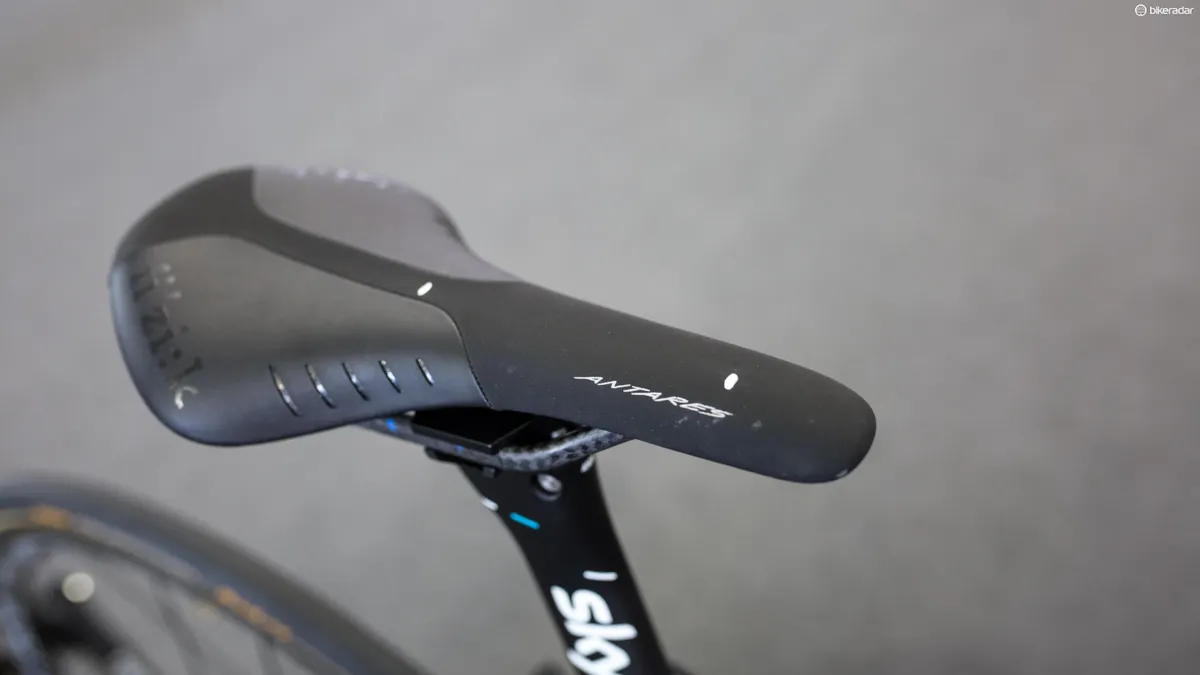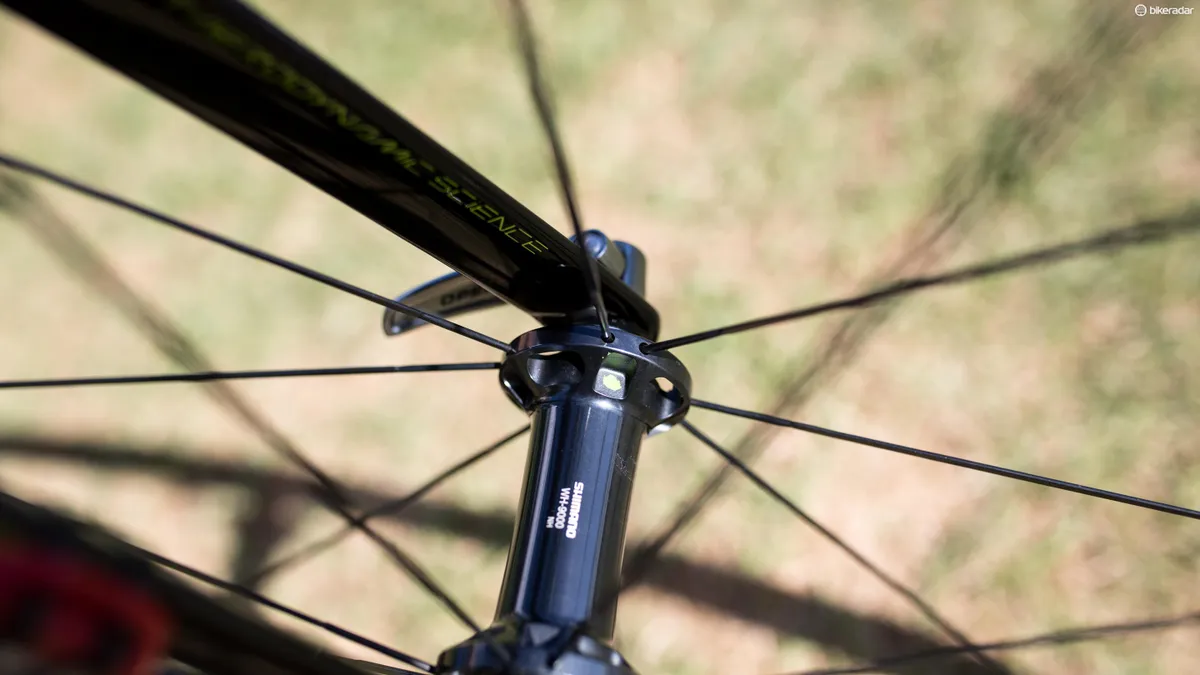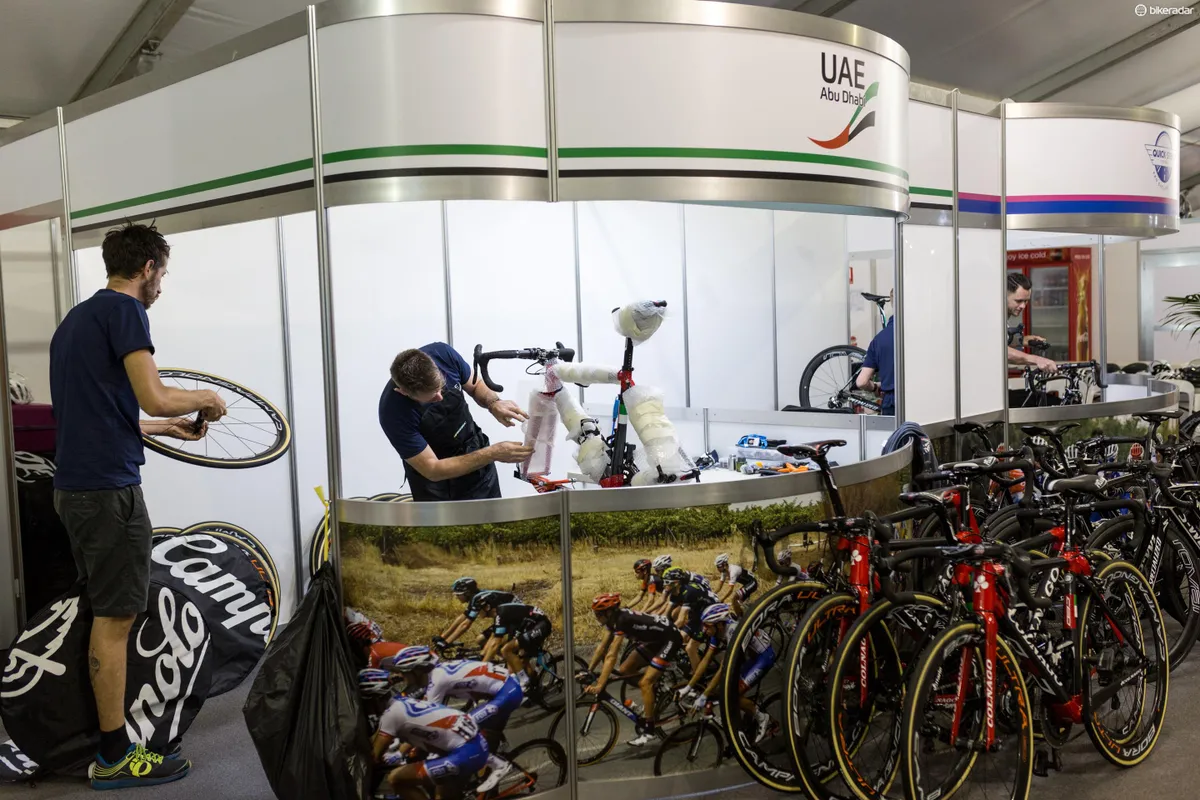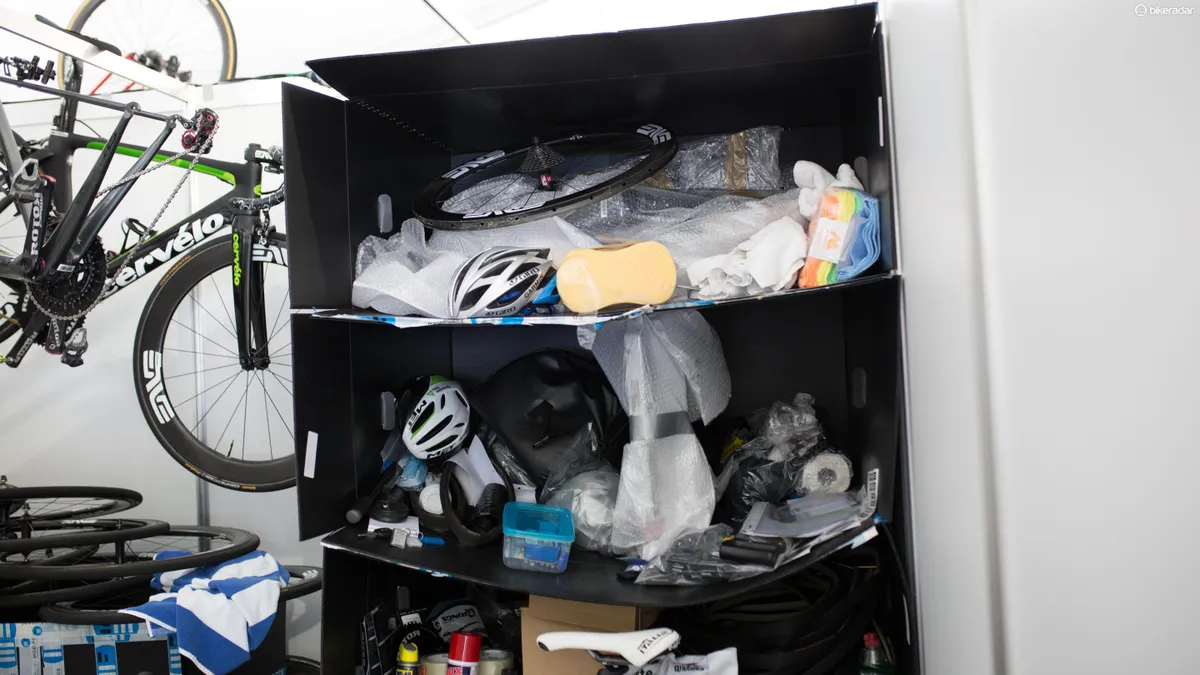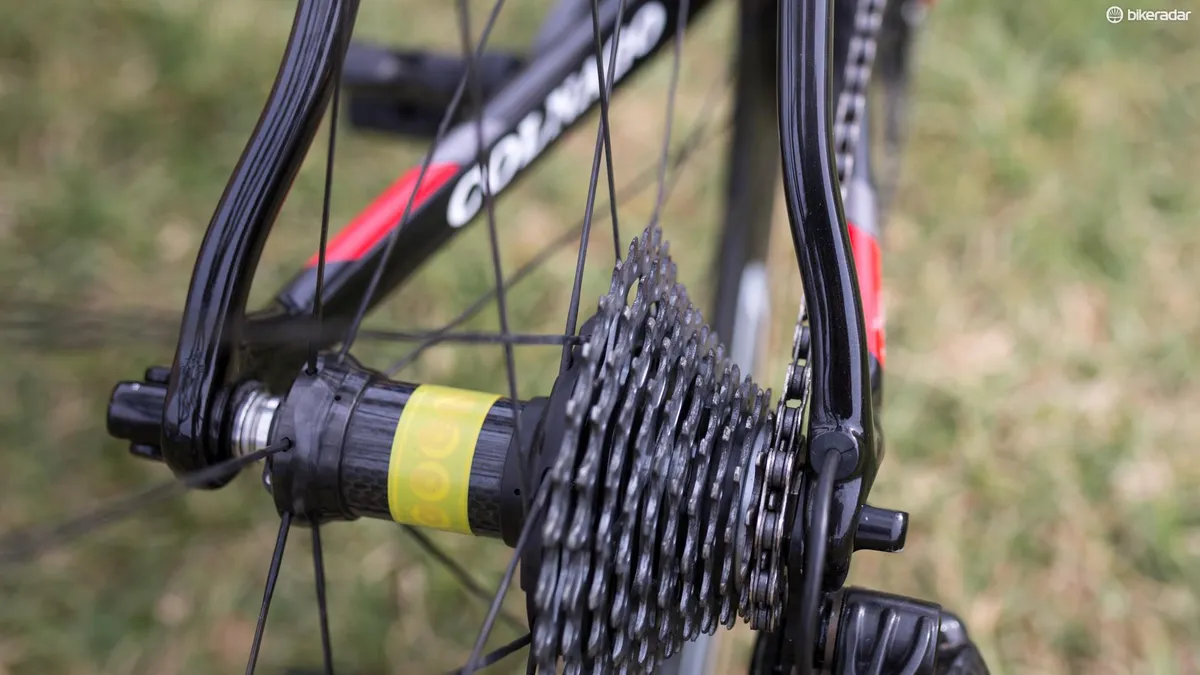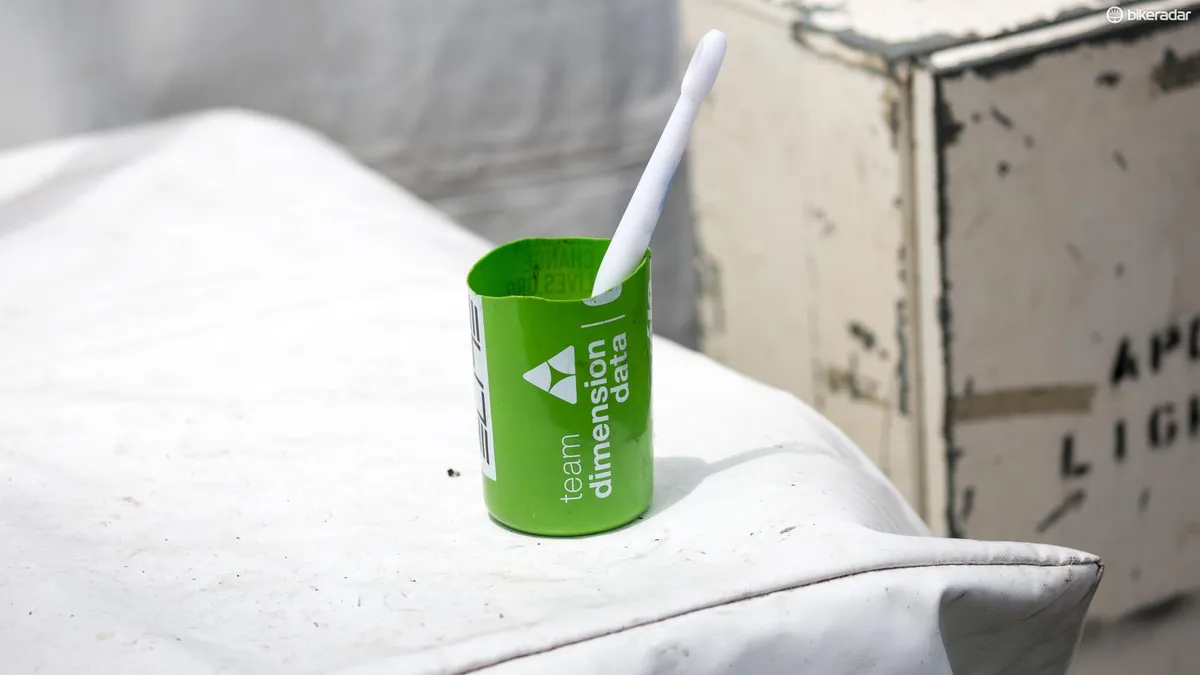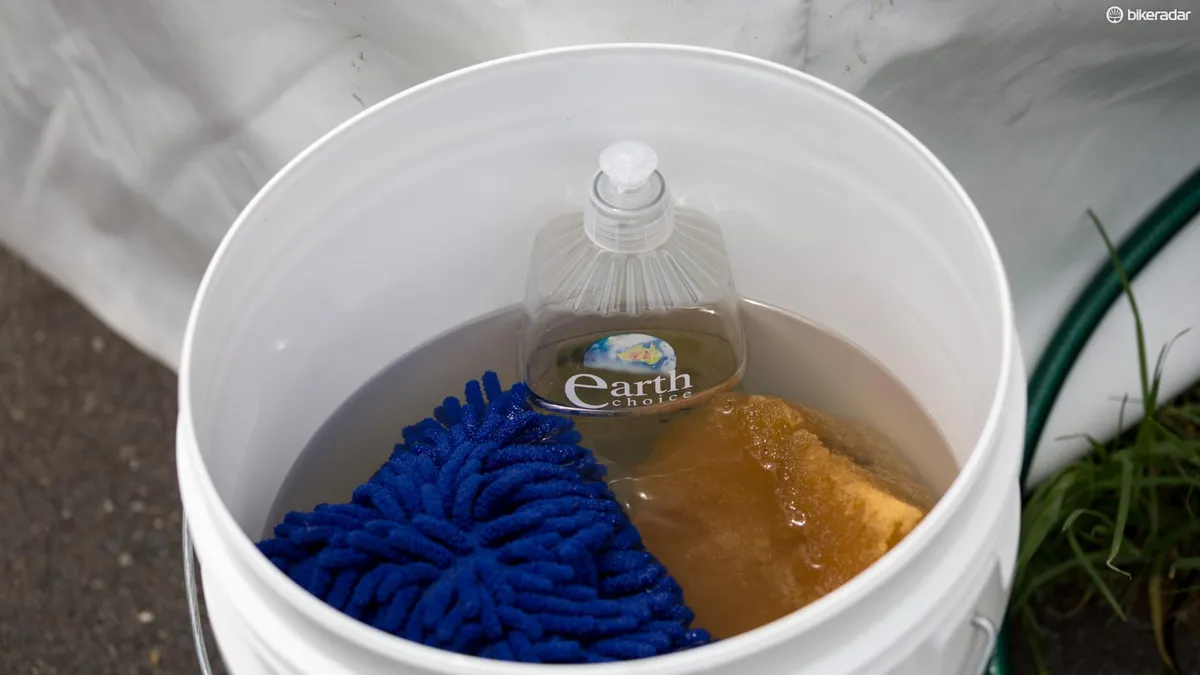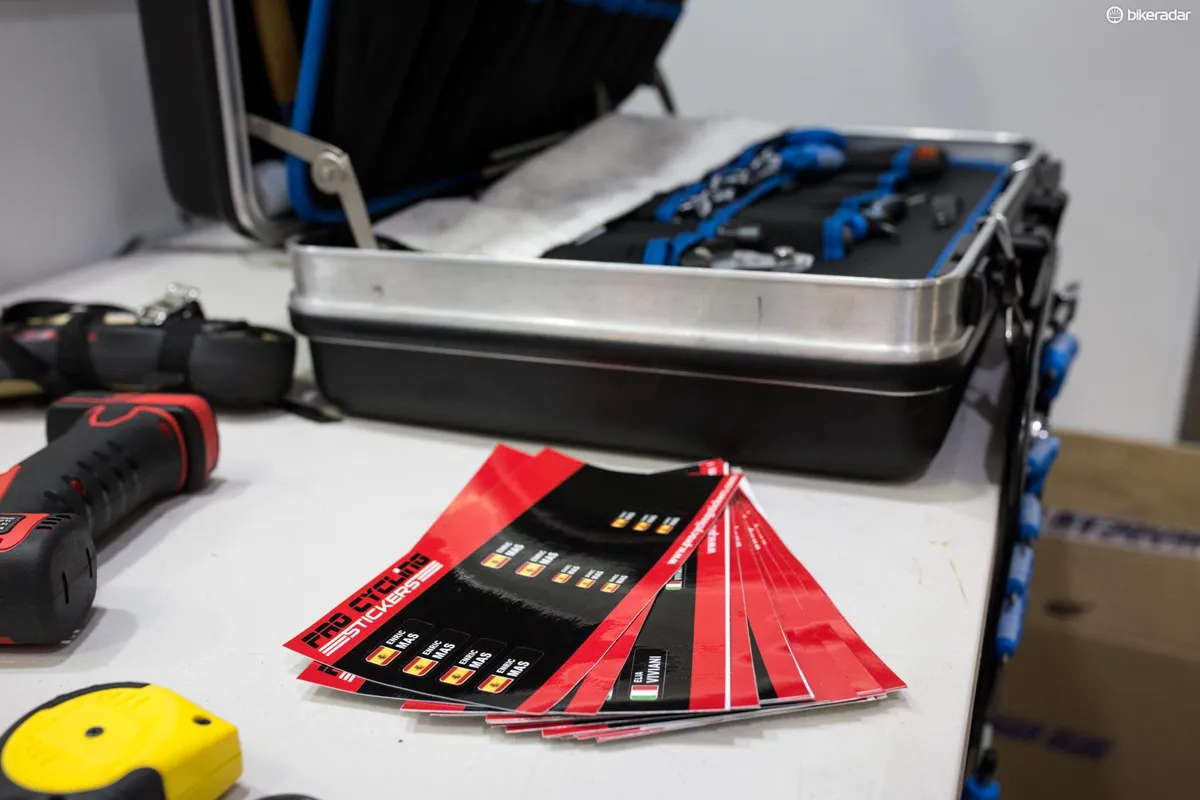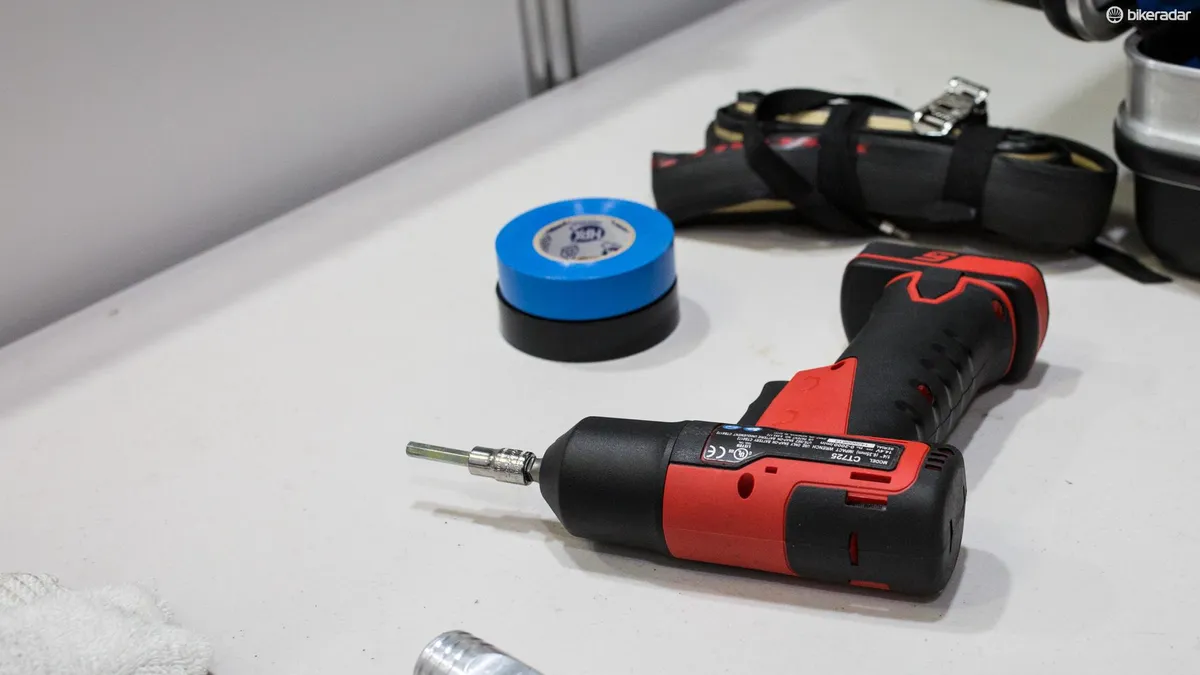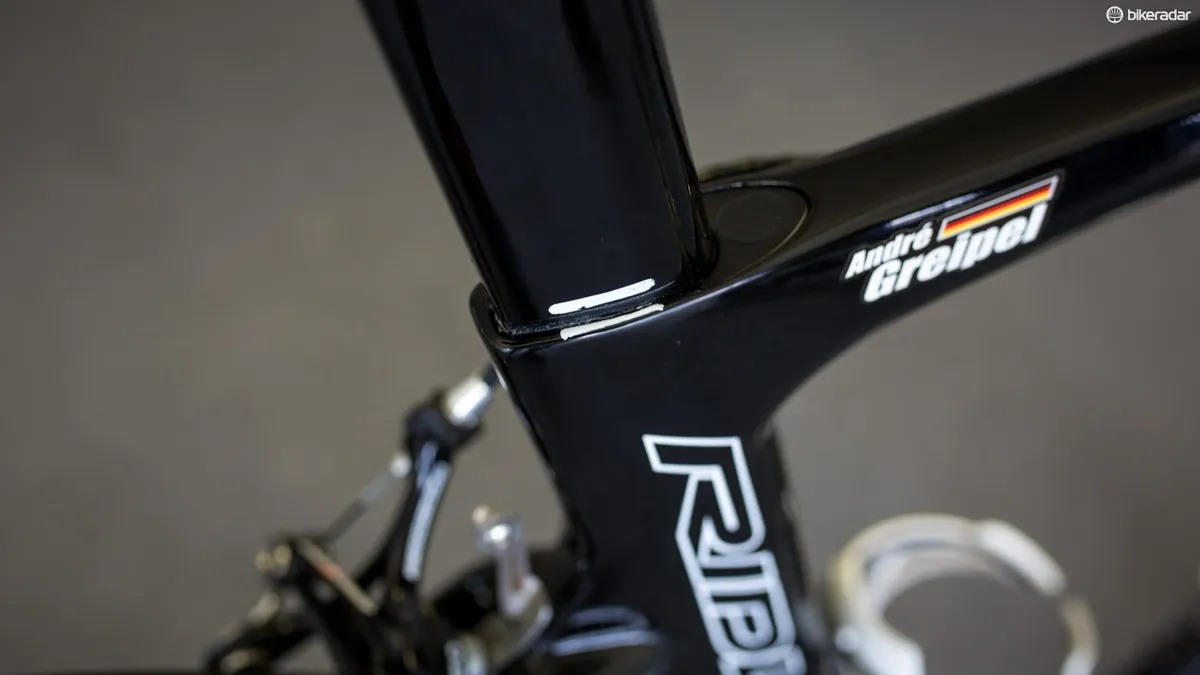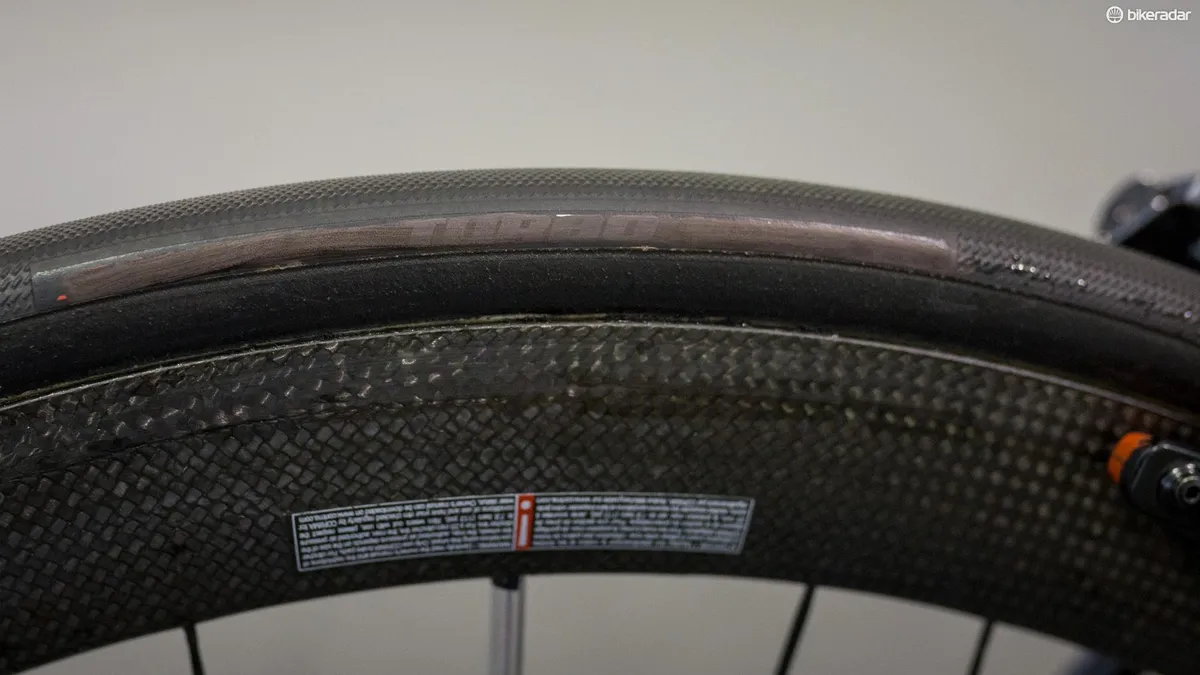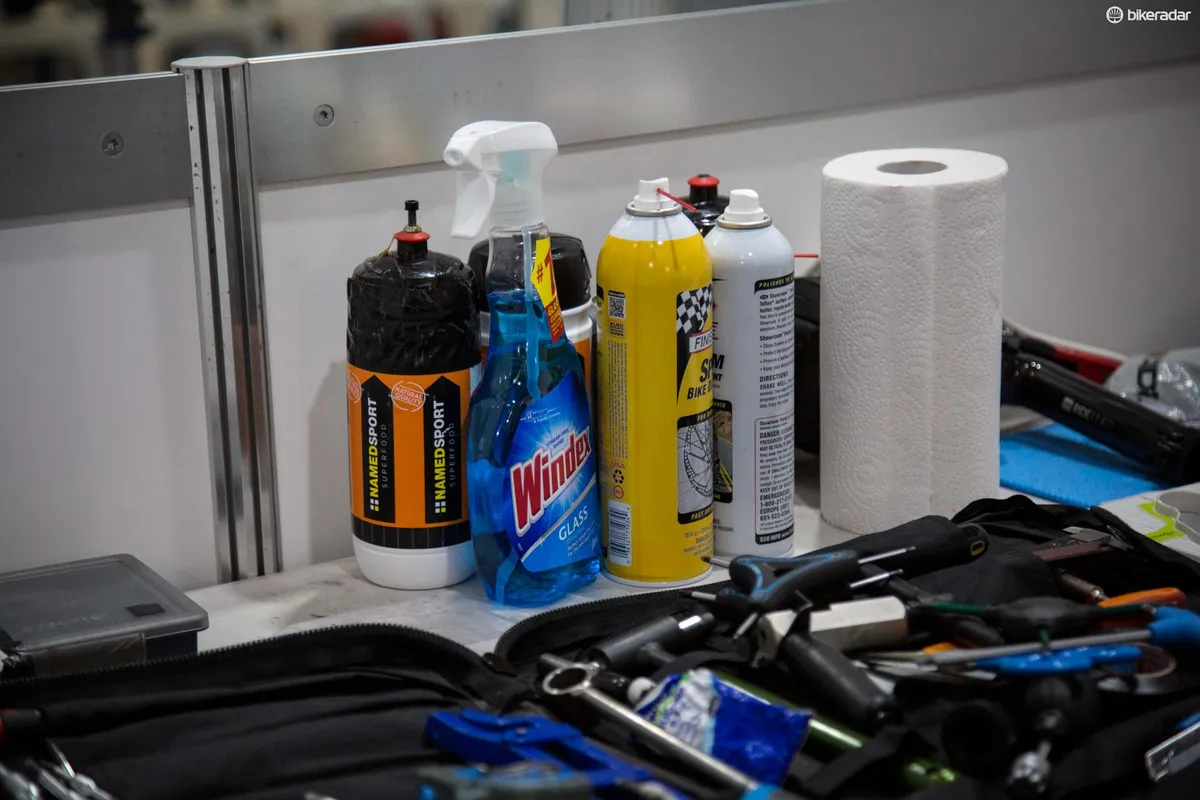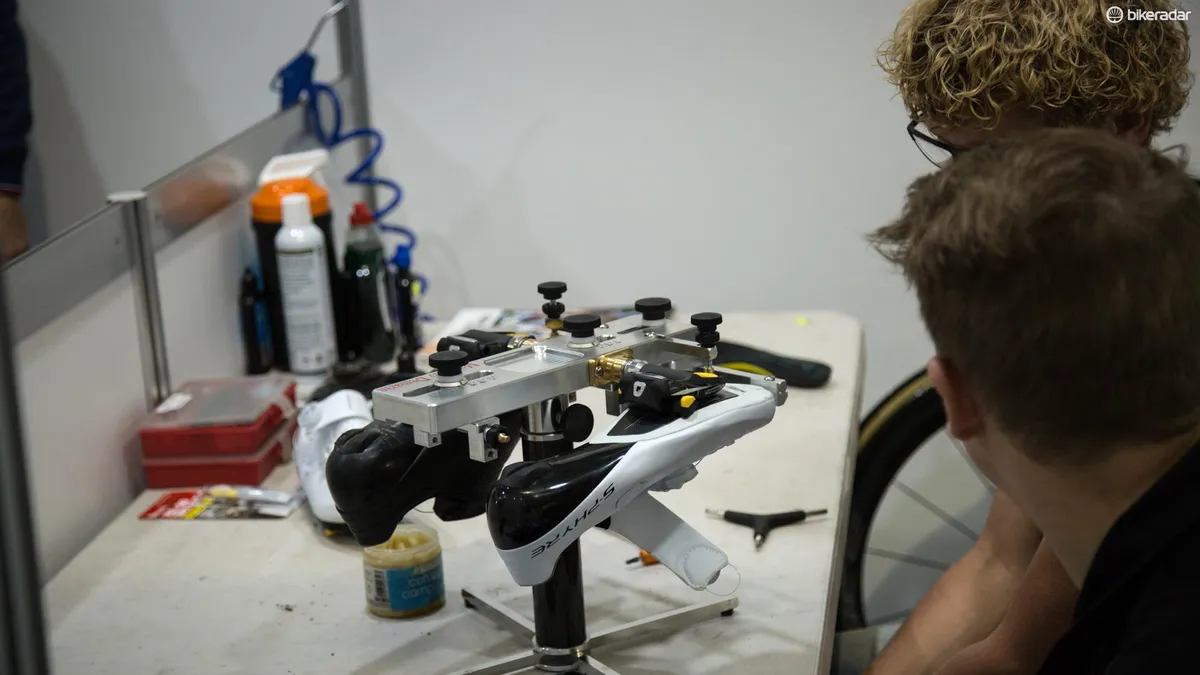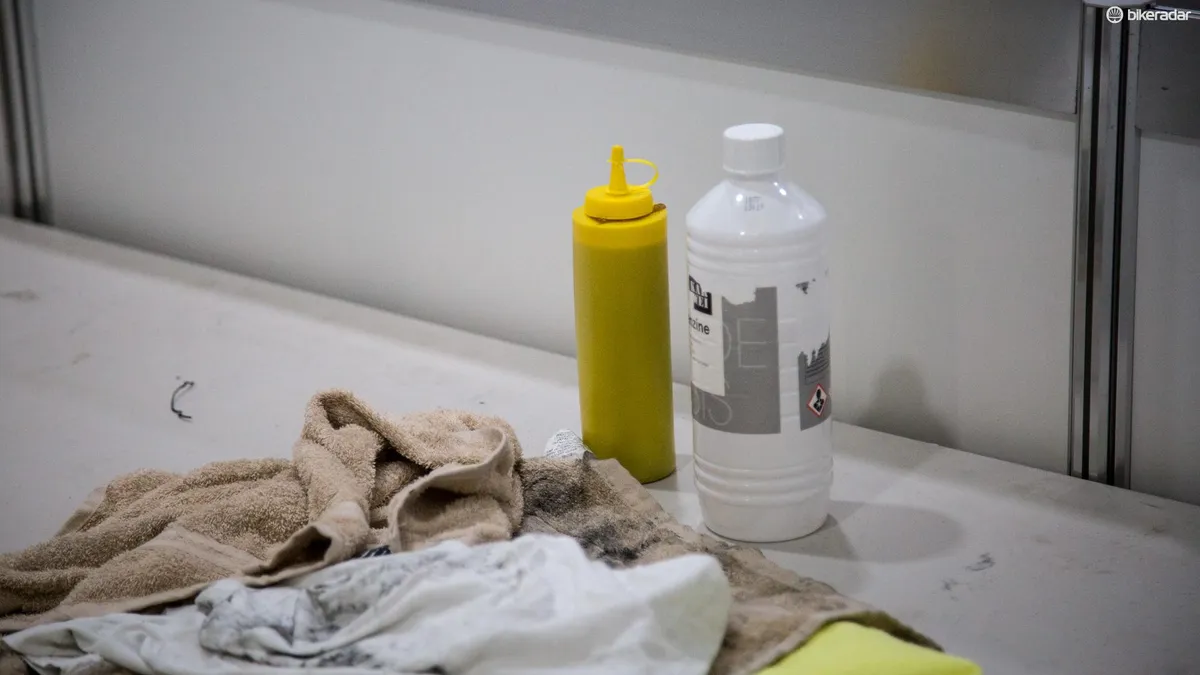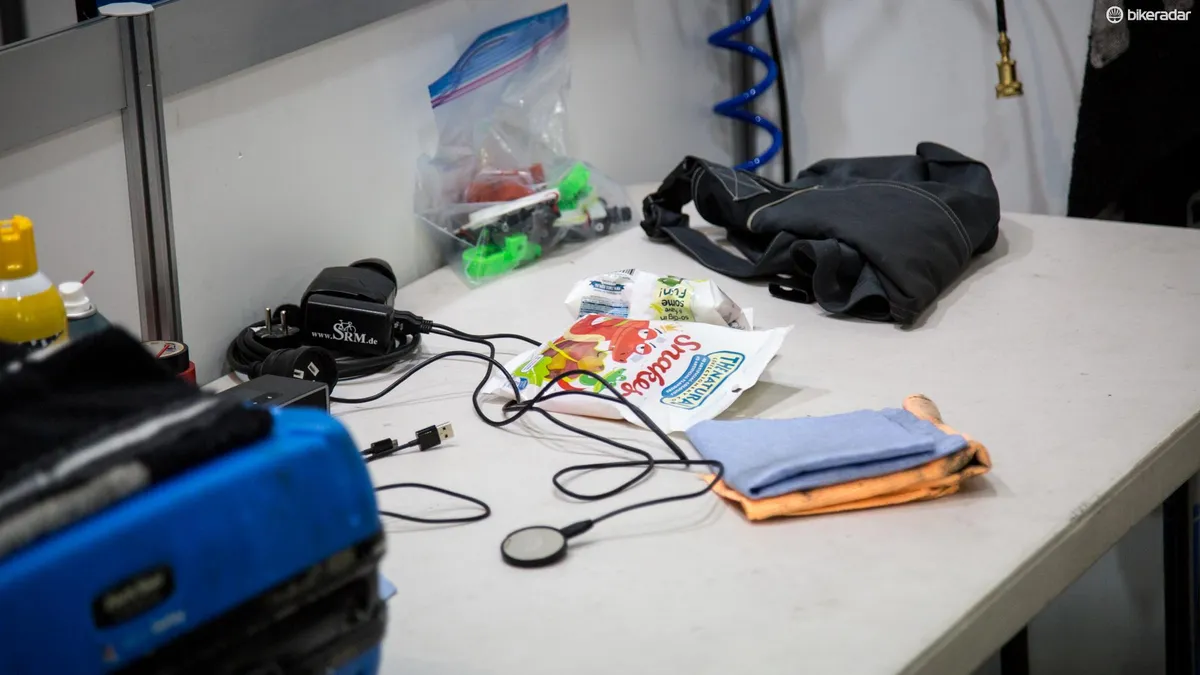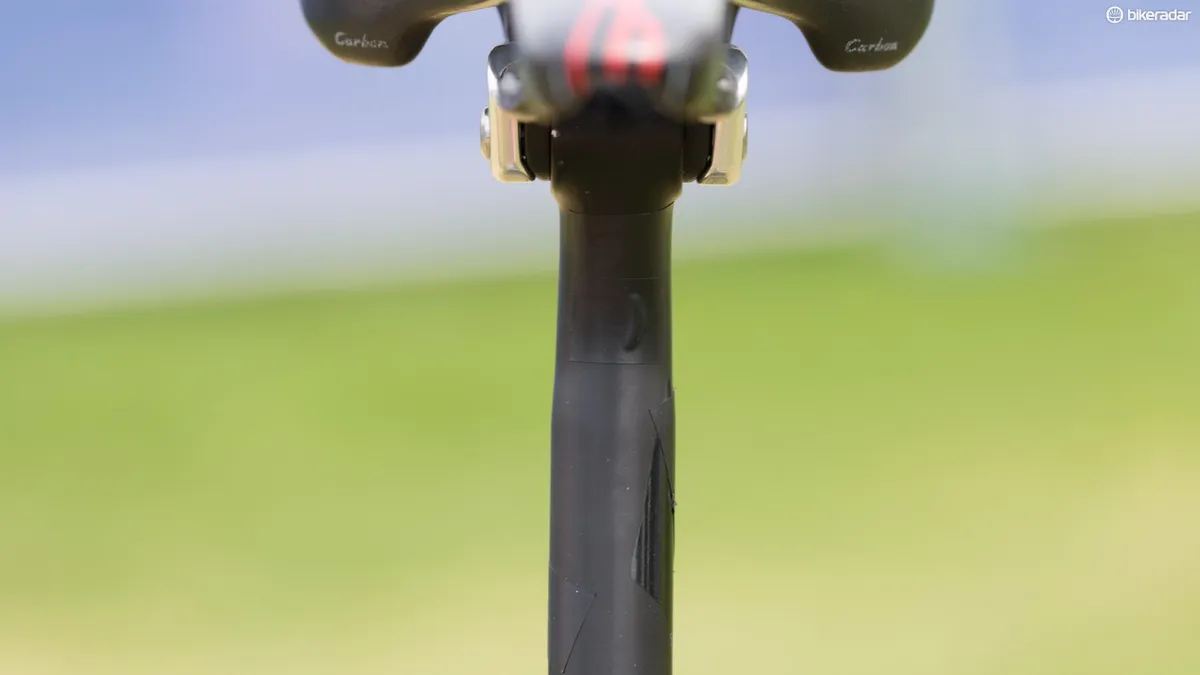Among the glitz and glamour of the WorldTour, the riders get all the glory for their on-road performances, but the mechanics are heroes, too. Without them, the bikes would likely fall into greasy disrepair.
In doing everything from last-minute saddle-height adjustments and gluing tyres to cleaning up to nine bikes after a training ride in the rain, the wrenches keep the team going.
- New year, new gear — pros don the latest kit at the first WorldTour race of the season
- Tour Down Under 2018 news and bike galleries
- Top 5 2018 pro bikes
- Inside the race: AG2R La Mondiale at the Tour Down Under
Now, not everything pro mechanics do can be considered best practice for the rest of us. For instance, they clean bikes with power washers, sometimes blowing the grease out of bottom brackets, wheel bearings and headsets in the process — but they're going to have to overhaul or replace them before the end of the week anyway, so it's not a huge loss.
They also cut into expensive gear, file, tape, drill, bend and melt if necessary to make the riders happy.
They are a clever bunch as well, often coming up with solutions to problems, such as incompatible parts, to keep sponsors happy and make their own jobs easier. They're pretty patient with the bikes perpetually moving towards integrated this and hidden that.
So here are a few of the hacks we've seen pro wrenches using at races.
1. Power banks
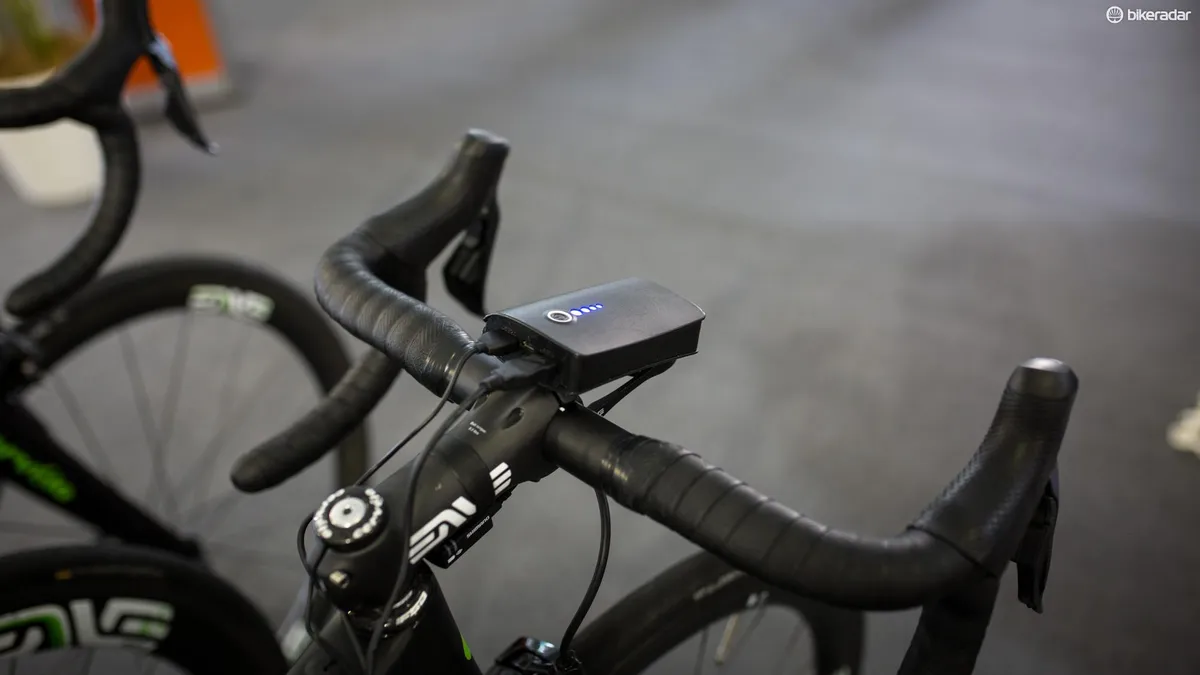
There are few things worse than losing front shifting when you’re on a ride because you forgot to charge your Di2, EPS or eTap battery. Now imagine the same thing happening at the pointy end of a race when trying to respond to an attack.
It seems these days, there are never enough outlets to charge all our gadgets. Imagine if you had to charge a whole team's worth of stuff.
With portable power banks becoming exponentially more popular in the past few years (and cheaper too), the WorldTour teams are taking advantage of these compact power sources to keep drivetrains fully charged.
2. Water bottles
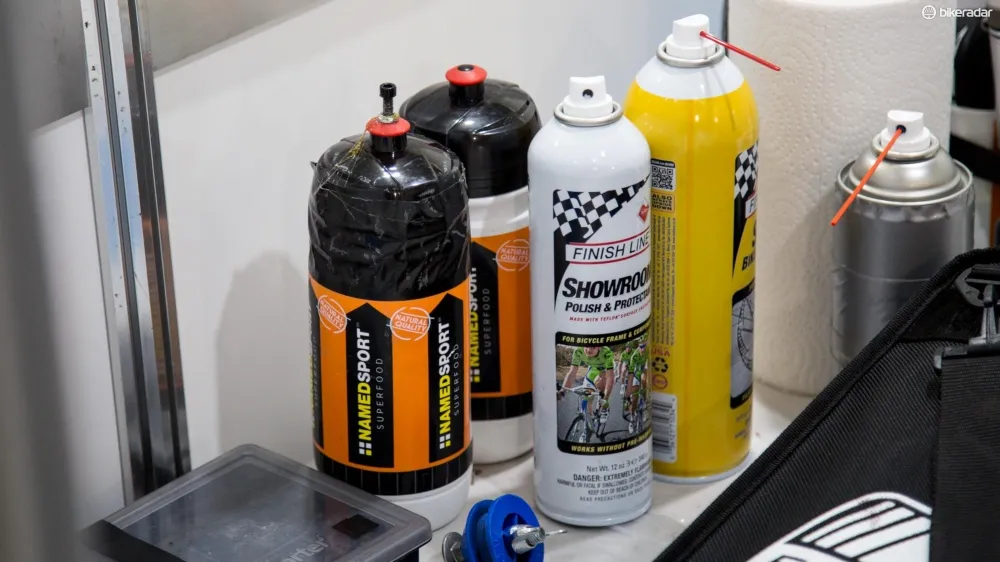
One thing pro teams do not have a shortage of is water bottles, and most mechanics use chopped-up bottles to hold things other than water.
The classic is for mechanics to mix up their signature concoction of degreaser in an old bottle, which is then painted onto chains, cassettes and chainrings when the bikes are cleaned.
Mechanics also use chopped bidons to hold tubular glue as they prep tyres and wheels. While most dip a paintbrush in the glue, the Trek-Segafredo mechanics use an intact bidon as a squeeze bottle to lay down a bead of glue on the rim before spreading it with a brush.
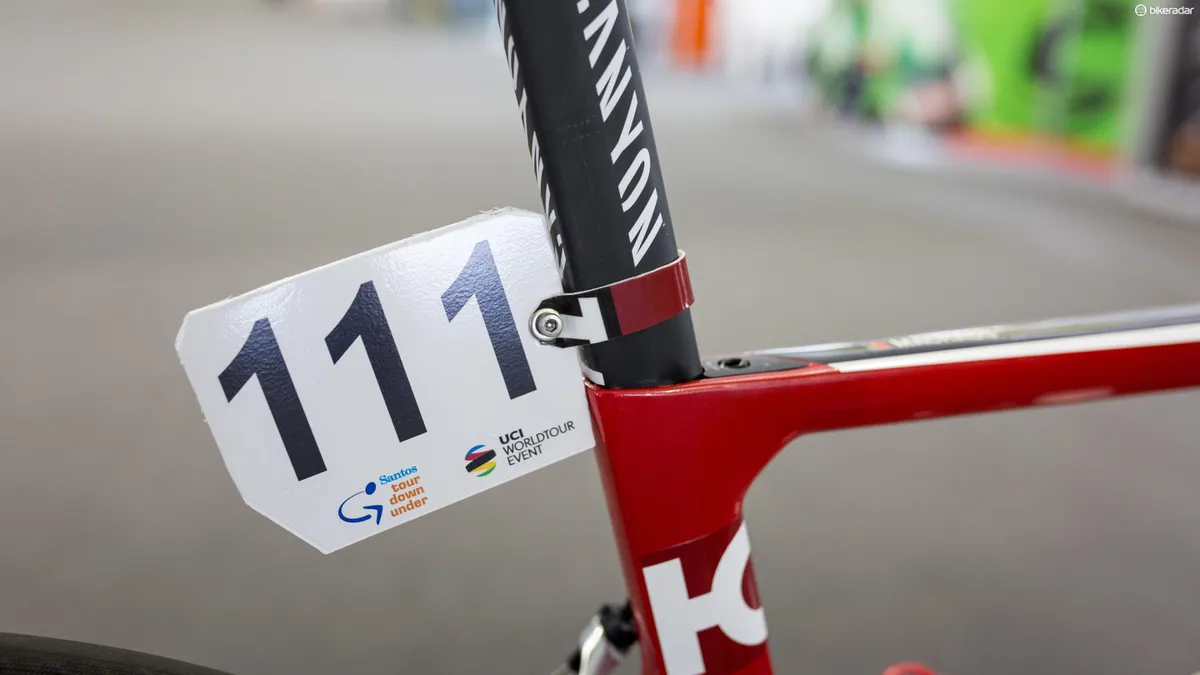
The most creative use for a bottle, however, comes to us from the Katusha-Alpecin wrench, who fashioned a race number holder from a bottle and a bolt.
3. Ultegra cassettes
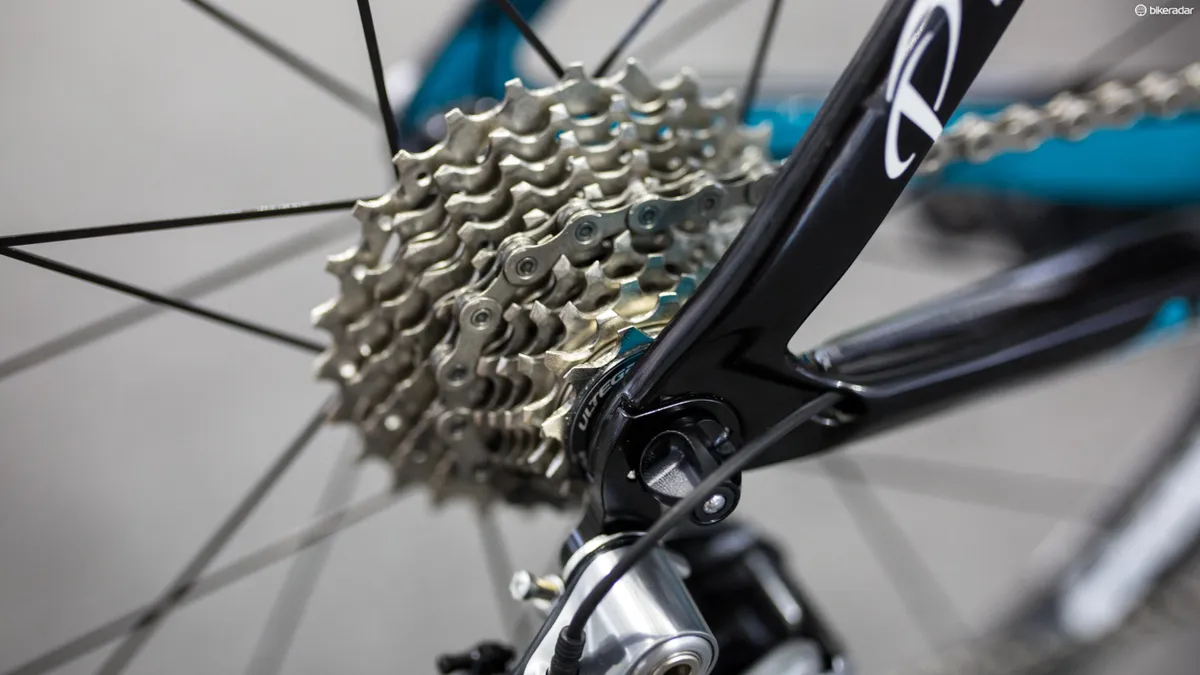
Something many a bike shop has been preaching for years is the use of Ultegra/Force cassettes in lieu of Dura-Ace/Red. Last year Dimension Data, Quick-Step, Cannondale-Drapac (now EF Education First-Drapac p/b Cannondale), were all running Ultegra cassettes, this year it seems the majority of the teams are now on Dura-Ace. However, Astana and Katusha-Alpecin were both spinning second-tier gears at the back.
They are considerably cheaper and shift just as well; the only downside is they are a touch heavier. But, with the UCI still enforcing the outdated 6.8kg minimum weight limit, it serves as functional weight, rather than dropping chain links or fishing weights down the seat tube.
4. Tyre valve tape
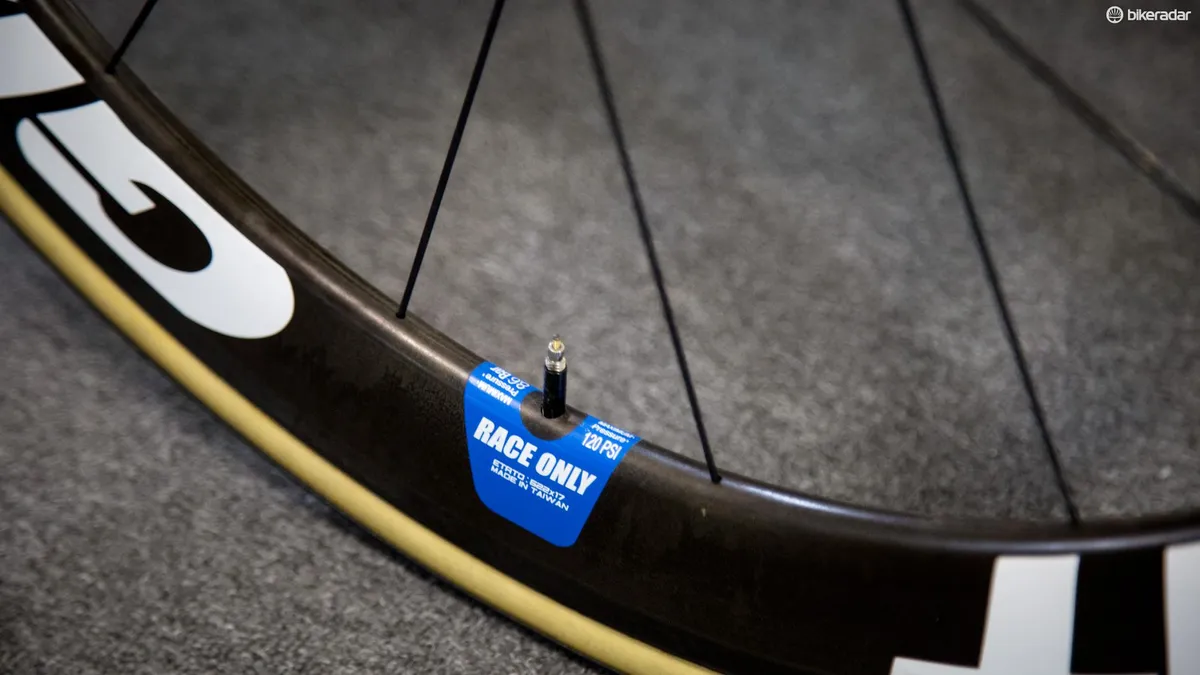
Taking a piece of electrical tape, piercing it with the valve stem and sticking it to the rim is a tried-and-true solution for rattly valve stems.
Sure, wheel and tyre brands have purpose-made stickers (Giant appears to have race-specific stickers) that do the same thing, and you could probably use a valve nut too, but a small piece of electrical tape is quicker, faster and looks cleaner than the alternatives. Oh, and it works, too.
5. Power tools

Power tools and lightweight carbon-fibre are usual things that should be kept miles apart, however, Rune Kristensen, a mechanic for Quick-Step Floors uses a power drill to thread thru-axles in and out of the team’s Specialized Venge ViAS Disc bikes.
“It’s only a few seconds faster, but the riders think it’s faster, and they are the ones stressing because they have to catch back on,” Kristensen said.
Fred Bassy, one of EF Education First-Drapac p/b Cannondale’s mechanics, said his team was looking for a similar solution for the thru-axles on the team's Synapse Disc bikes.
“We want something similar to what F1 have when changing wheels,” Bassy said (making the sound made by the air impact guns used in race car pits).
6. Cleaning tips

The amount of work that goes into keeping the pro riders' bikes looking good is massive. While the riders may go out for a six-hour training ride, the mechanics are hard at work prepping shoes and cleats, making bottles, gluing tyres and so much more. Then, when the riders get back, they’re overhauling bikes from top to bottom.
For these pro wrenches, efficiency is key and if they wash the grease out of a bearing it’s not the end of the world because they were either going to have to replace or rebuild it anyway. Bottles of automotive degreaser is often painted onto chains, cassettes and chainrings.
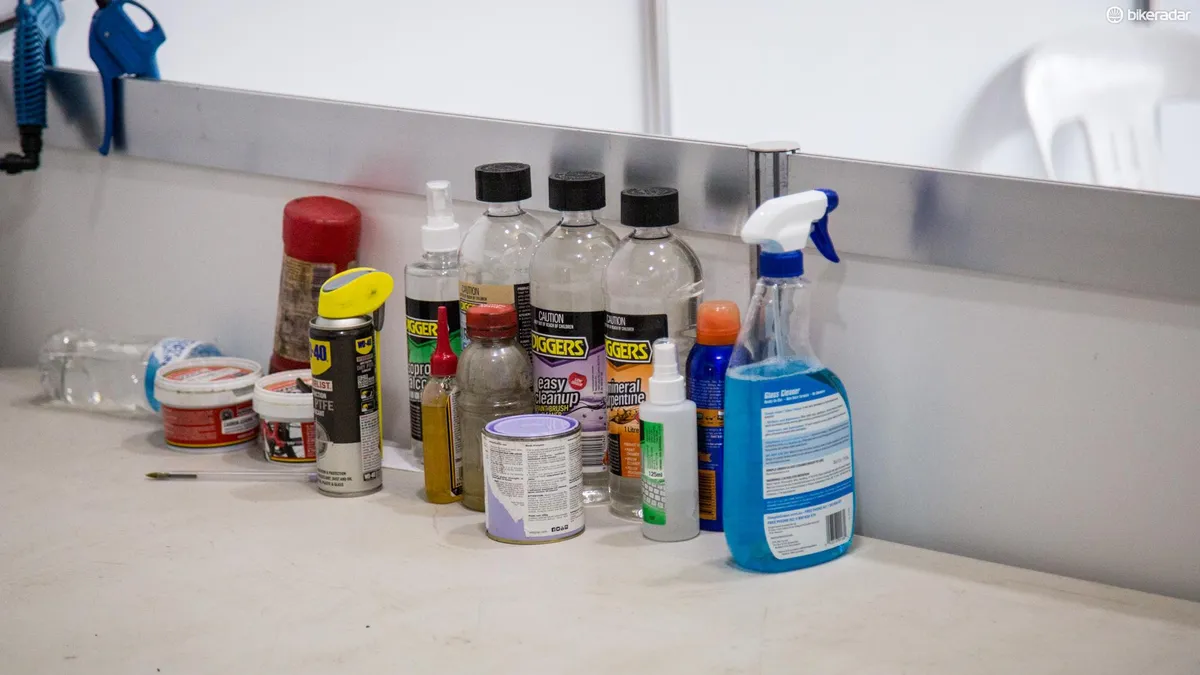
We also see quite a bit of Windex at mechanics' workstations, oven- and stove-cleaning products, and even turpentine and methylated spirits.
7. Air compressor

Mechanics always have access to an air compressor, with most using them to blow water out of moving parts such as shifters, bearings and drivetrain components. Water kills moving parts and, more often than not, WorldTour mechanics don’t have time to wait for bikes to dry completely.
Mechanics also use the compressor to inflate tyres. Often, gauges aren't used for initial inflation; final tyre pressure is often dialed-in right before a race with a trusted pump or electric inflator.
8. Shoe-cut adjustments

Many teams such as LottoNL-Jumbo, Bahrain Merida and Movistar have shoe sponsors, but riders' feet come in all shapes and sizes, so not everyone can comfortably wear the shoes their sponsors provide.
Some teams opt for lightweight, sponsor-friendly Lycra shoe-covers to hide a rider's shoe of choice while others perform surgery. As you can see in the photo above, this LottoNL-Soudal rider's feet are too wide for the Shimano S-Phyres he is wearing, so to relieve some pressure the mechanics have made an incision to allow a bit of wiggle room for his toes.
9. Pen marks and stickers

Pro mechanics are forever trying to make their own lives easier and use tailor-made tools to do so, even when they have to pack light. Just about every team has a fitting jig and cleat-fitting tools, but even more prevalent is the use of paint markers and stickers.
Mechanics will mark everything from saddle heights and setbacks to wheelsets designated for particular riders. It’s something so simple, yet saves mechanics a lot of time over the course of a race. Many teams use little number stickers to denote race bikes vs back-up/training bikes as well.
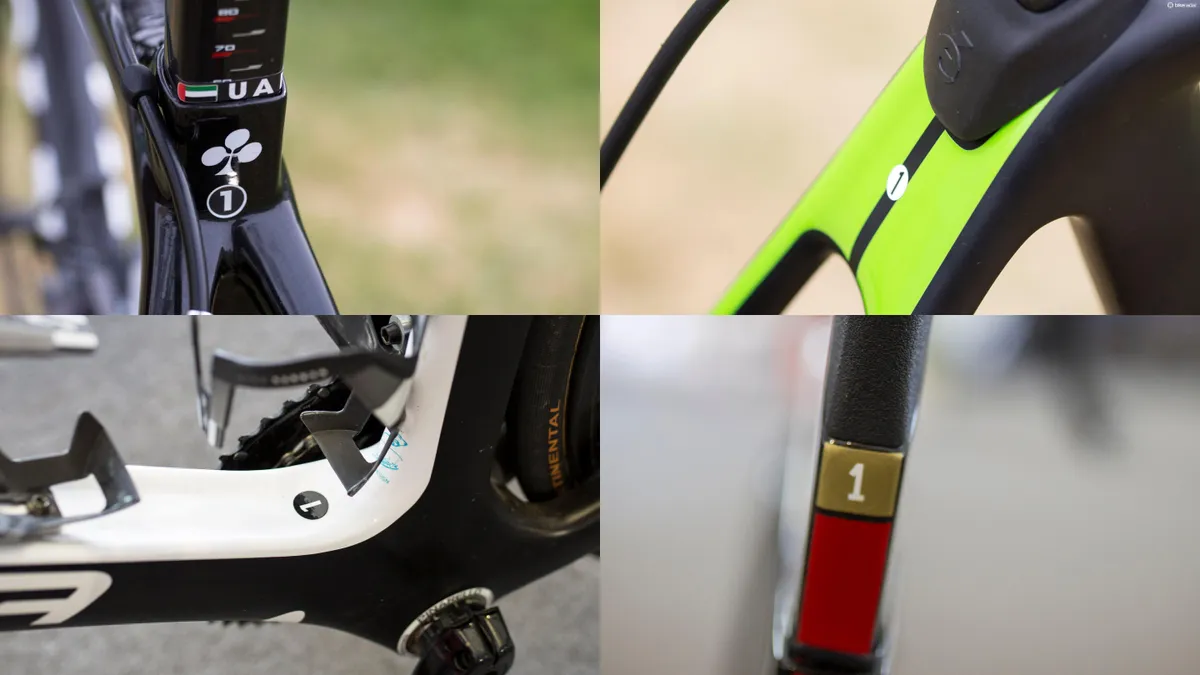
10. Scrub off non-sponsor brands
Companies pay a lot of money to sponsor a cycling team, so, as you can imagine, they don’t want other brands plastered on riders' kit and bikes.
Teams using non-sponsor gear is nothing new, but it’s always impressive how good the pro mechanics are at removing branding from gear while still keeping it looking spick and span. There isn’t as much scrubbing, chopping or relabelling going on as in years past, but the most notable occurrence we've spotted in recent years is on Team Katusha-Alpecin's Canyon Aeroroad CF SLX.
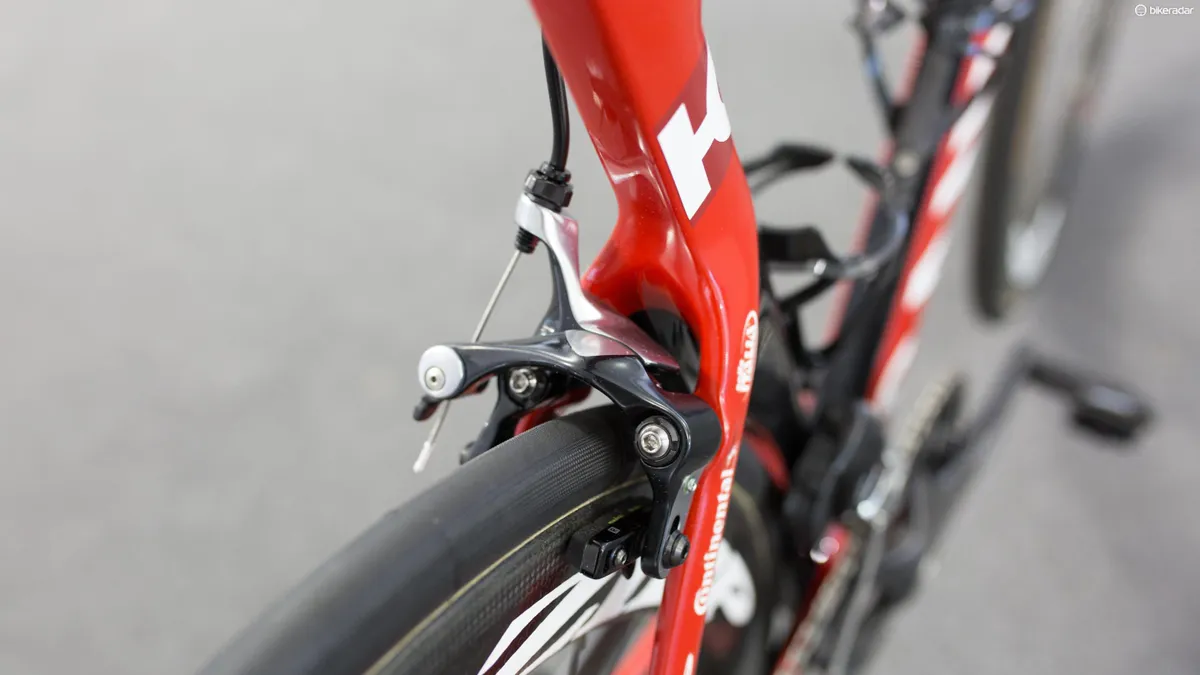
This frame uses direct-mount brakes, which SRAM didn't release until February 1, 2018. The solution: scrub the ‘Dura-Ace’ off the BR-9010 caliper.
Just as we were about to shoot Luis Leon Sanchez’s Argon 18 Gallium Pro at the Tour Down Under, Astana mechanic Javier Manero came running out, Sharpie in hand, to black out the label on the tyres — Astana doesn't have a tyre sponsor for 2018.

Adam Hansen’s bike is always sporting quite a lot of magic marker and electrical tape in an effort not to bring attention to non-sponsor gear. This year he is rocking Lightning Carbon cranks, Bor chainrings and a PRO Vibe Carbon seatpost put into the frame backwards to accommodate his unique fit.
11. Shrink-wrapped cables
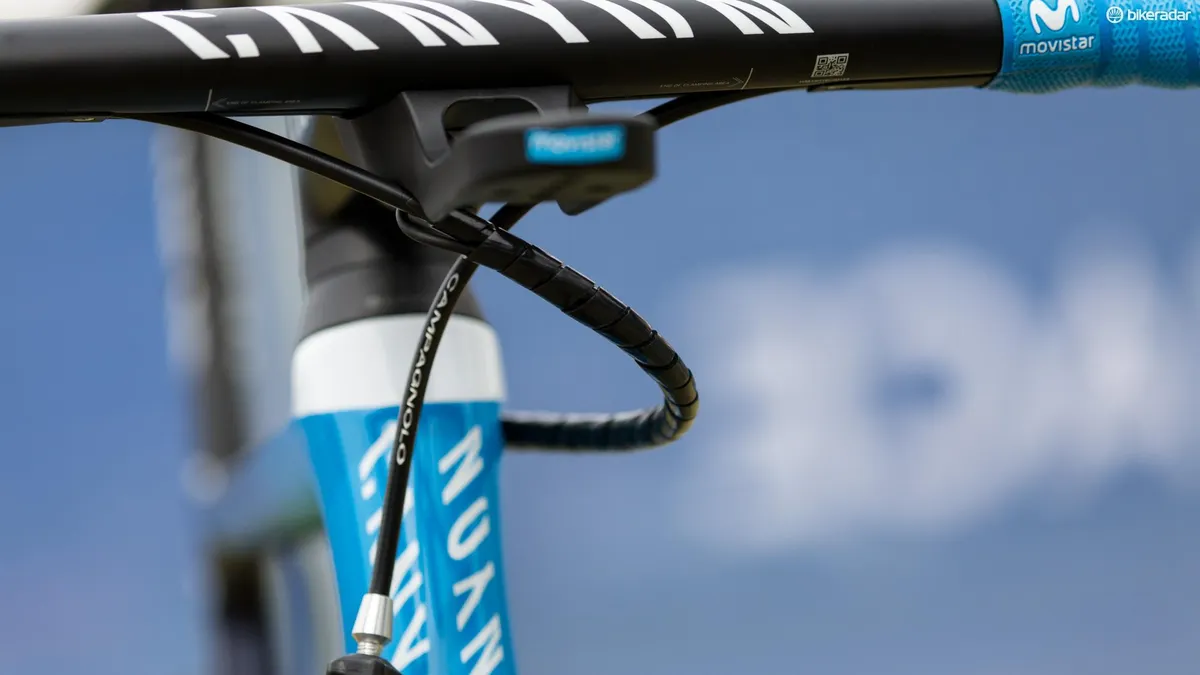
To prevent the rat's nest at the front of the bike, many bikes have cables and Di2/EPS wires shrink-wrapped or taped together.
Not only does this make the bike look much neater, and prevent rattling (to an extent), it also means there's one less thing to get snagged during a crash or quick bike change.
For more handy work from WorldTour mechanics, check out the gallery above.
This article was updated 31 January 2018
